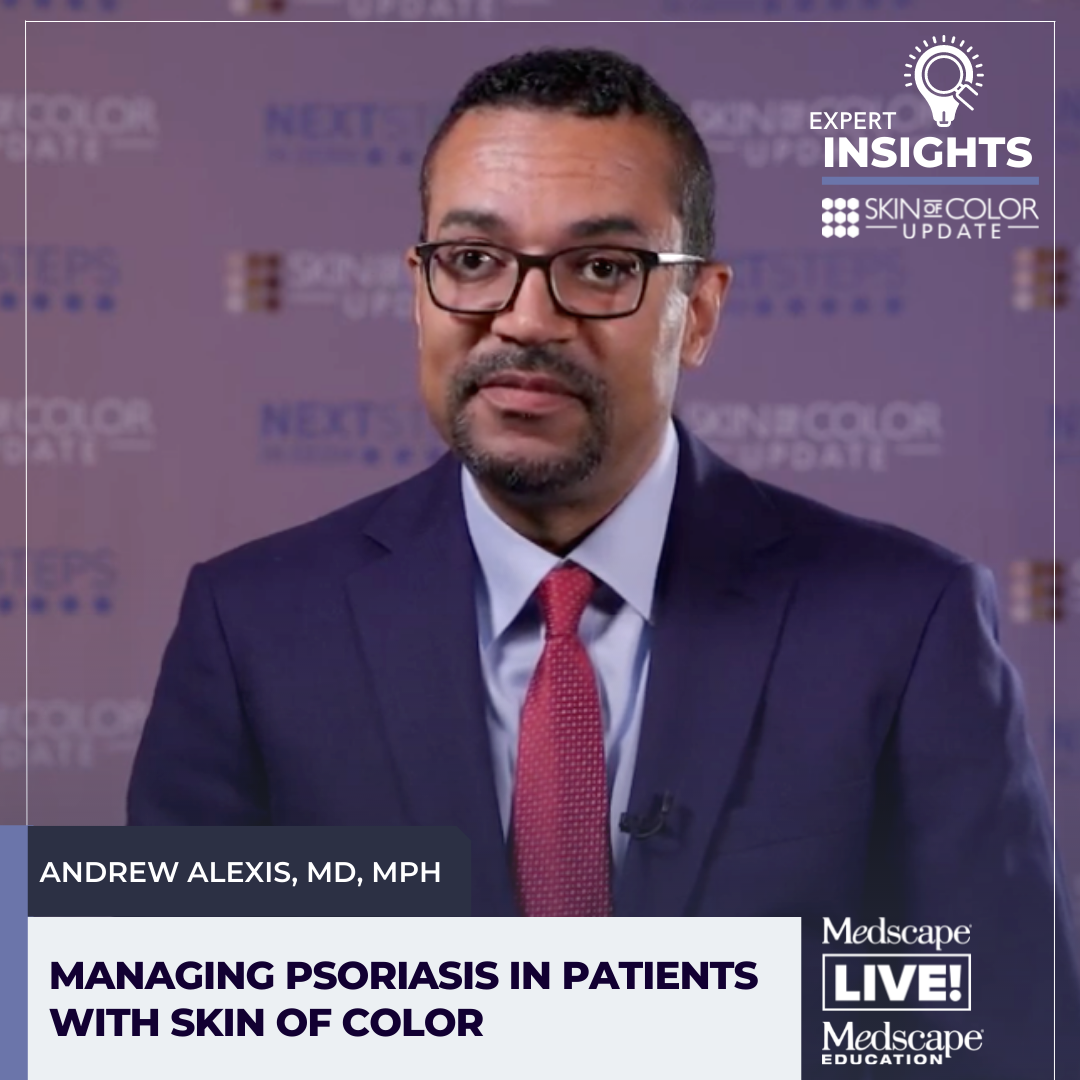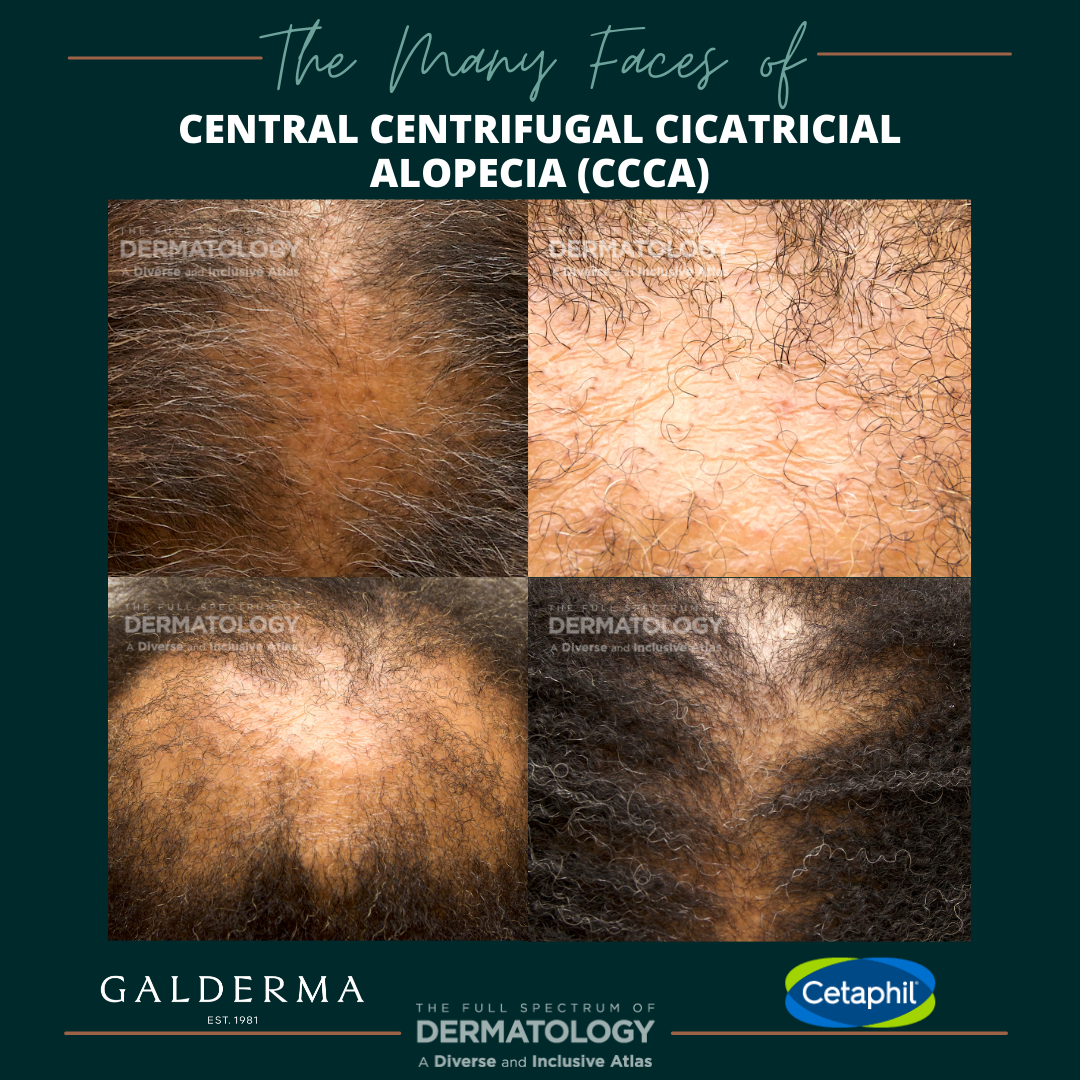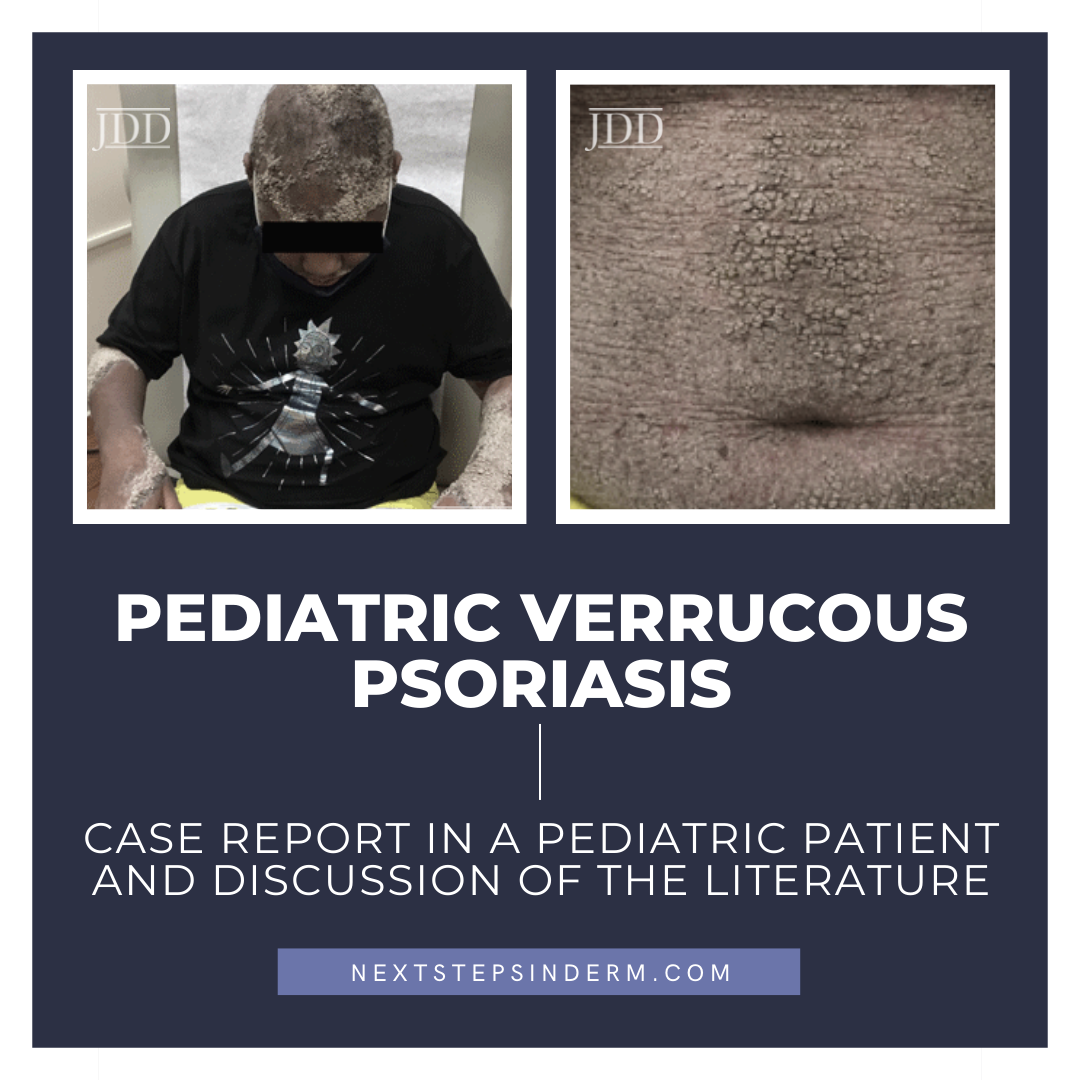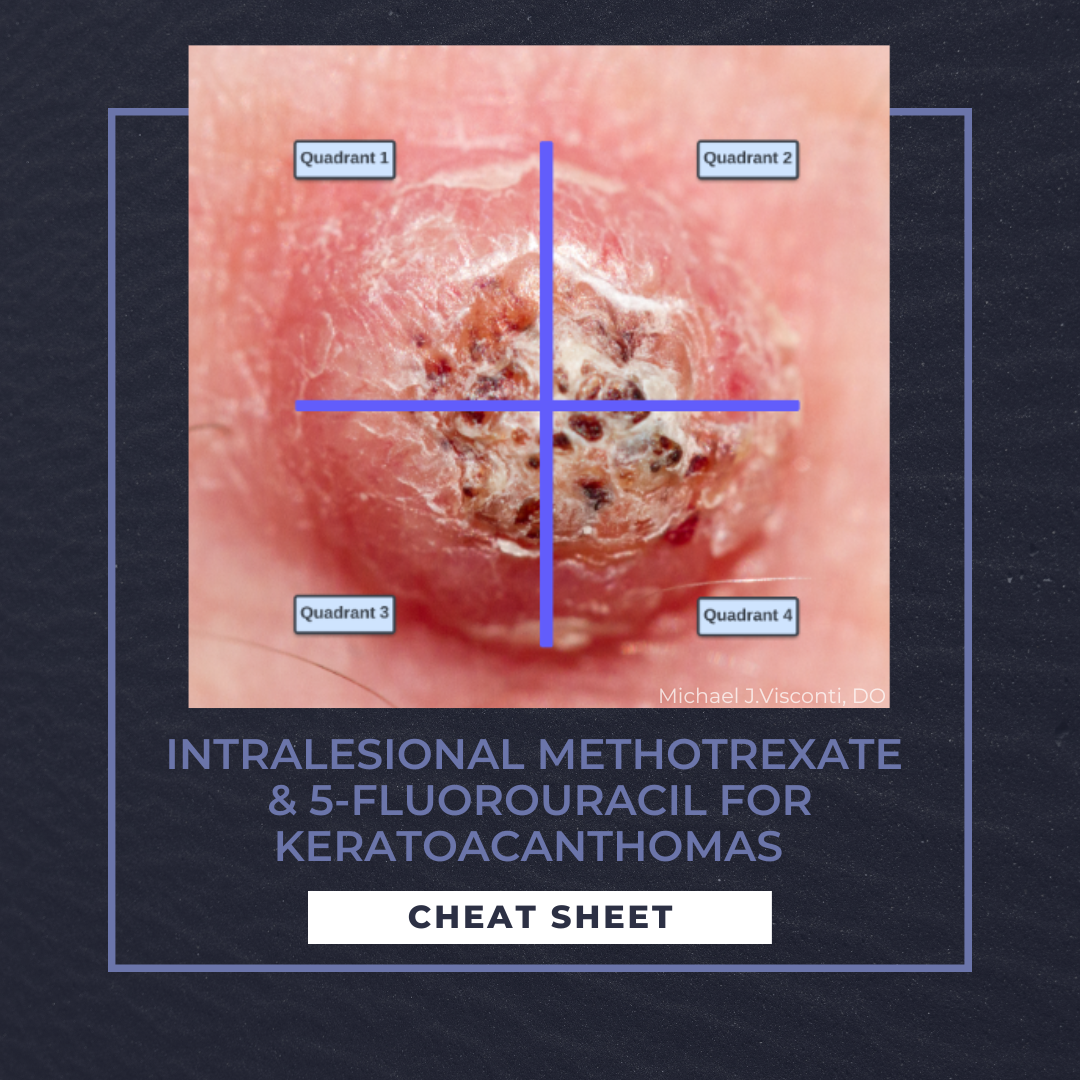Managing Psoriasis in Patients With Skin of Color: Get Expert Insights
 The burden of psoriasis in patients with skin of color is significant, with reduced quality of life and often delayed diagnosis compared to patients with white skin. Andrew Alexis, MD, MPH, shares how he thinks learners will benefit from participating in this enduring educational activity from our symposium at the 2022 Skin of Color Update annual meeting in New York.
[/vc_column_text][/vc_colum …
The burden of psoriasis in patients with skin of color is significant, with reduced quality of life and often delayed diagnosis compared to patients with white skin. Andrew Alexis, MD, MPH, shares how he thinks learners will benefit from participating in this enduring educational activity from our symposium at the 2022 Skin of Color Update annual meeting in New York.
[/vc_column_text][/vc_colum …
 The burden of psoriasis in patients with skin of color is significant, with reduced quality of life and often delayed diagnosis compared to patients with white skin. Andrew Alexis, MD, MPH, shares how he thinks learners will benefit from participating in this enduring educational activity from our symposium at the 2022 Skin of Color Update annual meeting in New York.
[/vc_column_text][/vc_colum …
The burden of psoriasis in patients with skin of color is significant, with reduced quality of life and often delayed diagnosis compared to patients with white skin. Andrew Alexis, MD, MPH, shares how he thinks learners will benefit from participating in this enduring educational activity from our symposium at the 2022 Skin of Color Update annual meeting in New York.
[/vc_column_text][/vc_colum … Continue reading "Managing Psoriasis in Patients With Skin of Color: Get Expert Insights"


 Unique characteristics of Central Centrifugal Cicatricial Alopecia (CCCA) range from hair breakage and thinning to follicular dropout and scarring to pinpoint papules within areas of new onset scarring.
Central centrifugal cicatricial alopecia (CCCA) is a progressive scarring alopecia affecting 3-6% of middle-aged, almost exclusively, Black women. CCCA classically presents as a patch of hai …
Unique characteristics of Central Centrifugal Cicatricial Alopecia (CCCA) range from hair breakage and thinning to follicular dropout and scarring to pinpoint papules within areas of new onset scarring.
Central centrifugal cicatricial alopecia (CCCA) is a progressive scarring alopecia affecting 3-6% of middle-aged, almost exclusively, Black women. CCCA classically presents as a patch of hai …  Verrucous psoriasis (VP) is a rare histologic variant of psoriasis. To date, fewer than 40 cases have been reported, with pediatric cases representing an exceedingly small fraction. Treatment options are limited, and the disease is often refractory to conventional methods. Herein, JDD authors Samantha Sherkin OMS-IV, Christian Summa OMS-IV, David Crasto DO, Zackary Whitney DO, Lazlo Karai MD PhD,� …
Verrucous psoriasis (VP) is a rare histologic variant of psoriasis. To date, fewer than 40 cases have been reported, with pediatric cases representing an exceedingly small fraction. Treatment options are limited, and the disease is often refractory to conventional methods. Herein, JDD authors Samantha Sherkin OMS-IV, Christian Summa OMS-IV, David Crasto DO, Zackary Whitney DO, Lazlo Karai MD PhD,� …  Keratoacanthomas are a low-grade, well-differentiated variant of squamous cell carcinoma. Characteristically, their abrupt-onset and crateriform microscopic findings assist with their differentiation from more aggressive squamous cell carcinoma. While surgical treatment remains a viable and appropriate option for their management, clinical scenarios (described below) may portend to better outcomes …
Keratoacanthomas are a low-grade, well-differentiated variant of squamous cell carcinoma. Characteristically, their abrupt-onset and crateriform microscopic findings assist with their differentiation from more aggressive squamous cell carcinoma. While surgical treatment remains a viable and appropriate option for their management, clinical scenarios (described below) may portend to better outcomes …  On this Mnemonic Monday, we challenge you to remember metabolic syndromes associated with trichorrhexis nodosa (TN) of the hair with the following mnemonic:
BLT Noodles
B=Brooms, (e.g. frayed hair fibers with the appearance of two broomsticks pushed together in trichorrhexis nodosa)
L=Low= helps remind you that this is associated with metabolic syndromes, with varying low or high leve …
On this Mnemonic Monday, we challenge you to remember metabolic syndromes associated with trichorrhexis nodosa (TN) of the hair with the following mnemonic:
BLT Noodles
B=Brooms, (e.g. frayed hair fibers with the appearance of two broomsticks pushed together in trichorrhexis nodosa)
L=Low= helps remind you that this is associated with metabolic syndromes, with varying low or high leve …